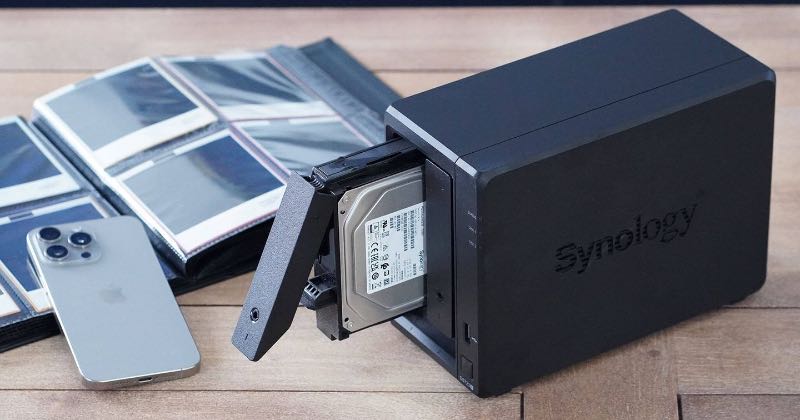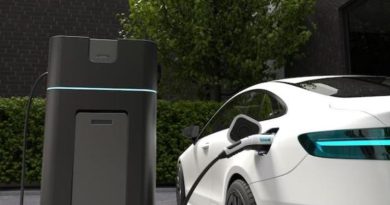After many years of paying subscriptions to cloud services, I decided to create my own cloud to store all my photos and personal files. This has allowed me to save a lot of money.
Big tech companies no longer just want to sell you their phones; Their real business is offering services that make you dependent on a monthly subscription to access your data, backups and personal documents. Thus was born the concept of the cloud, a remote storage service that controls the data of millions of users around the world, probably including you and me.
Apple and Google are clear examples of this. They offer free storage space that quickly runs out due to the large amount of photos we take with our phones. Do you want to receive more emails in Gmail? You need to increase your storage, otherwise you will stop receiving emails.
Tired of this situation, I decided to put an end to the problem and set up my own system. The solution is in a network storage device, known as a NAS. A NAS is basically a small computer that is controlled over the network and to which several hard drives can be connected.
These drives can add up to a total capacity for a large storage volume (for example, four 4TB drives would add up to a total of 16TB). Different backup modes can also be configured to ensure the safety of your data in the event of a drive failure.
In short, with a NAS you can set up a high-capacity file server that stores all your data with automated processes, and that you can access from the Internet or your local network at home.
A cloud at home
Personally, I lean towards Synology solutions. This brand specializes in NAS devices and offers a very intuitive and visual operating system that you can configure from a browser. The main menu is similar to a Windows desktop, with a start menu from which you can launch installed applications. These applications are installed from a store called “Package Center,” although the operating system already includes many integrated solutions.
The most basic thing is to define shared folders so that multiple members of the household can store and access data over the network. This way, everyone can access a common folder and also create private folders. This is at a local level, but as for the cloud, several applications such as Synology Photos are useful.
Backing up photos and videos often consumes the majority of cloud storage. Apple offers 5 GB free on iCloud, which quickly fills up with 4K videos. Google offers 15 GB free, but that also feels insufficient if you take a lot of photos and videos. I was paying €2.99 per month for 200 GB, and more than 50% of that space was taken up by Google Photos. This needed to be stopped.
What consumes the most space: photos
Synology Photos is an application that, once installed on the NAS, allows you to automatically backup your phone’s camera roll. You just need to install the iOS or Android app and enter the credentials for your phone to access the NAS. Thus, all photos are stored on the NAS and you can review them in an interface with a timeline, facial recognition and geolocation, similar to Google Photos.
You can create albums, share photos via links, and search for photos of a specific person thanks to facial recognition. The advantages are:
- Remote access to all my photos (NAS must be turned on at home).
- Private storage on my hard drives.
- Share photos and allow others to upload photos to my NAS.
- An interface similar to Google Photos.
Although Synology Photos is a fantastic tool, Google Photos offers more advanced features, such as quick searches, automatic photo optimization, and memory collections. Synology Photos does not reach that level.
Private documents anywhere
Once the photo issue was out of the way, I thought about personal documents like invoices, contracts, and other important documents. It’s essential to have access to these documents from anywhere, but uploading them to the public cloud may not be secure. A NAS is ideal for this, allowing you to create your own personal cloud and access your files privately.
Synology DS Files is the right app for this. Compatible with Android and iOS, it lets you access your folders from anywhere with internet. You can view, download or share files directly from your phone, keeping everything in control.
Another option is Synology Drive, which syncs folders so you always have the same files on your NAS, PC, and phone. If you modify a document on your PC, it will be updated on the NAS and phone almost instantly. This is useful for groups that work with shared files.
How much does a NAS cost?
Now, the key question: how much does a NAS cost? These devices are not particularly cheap, but their versatility makes them profitable in the long term. A recommended model to start with is the Synology DS223J, which costs 215 euros (without hard drives) and allows you to connect two hard drives. There are cheaper options, such as the DS124 (169 euros), but it only has space for one hard drive. I recommend at least two bays to ensure scalability.
In my case, several members of the family use the NAS for backups, photos, file sharing, and accessing personal documents on the go. In addition, a NAS can serve as a media server, web server, download manager, and storage for surveillance cameras. A NAS is very versatile and will probably become one of your favorite devices.




